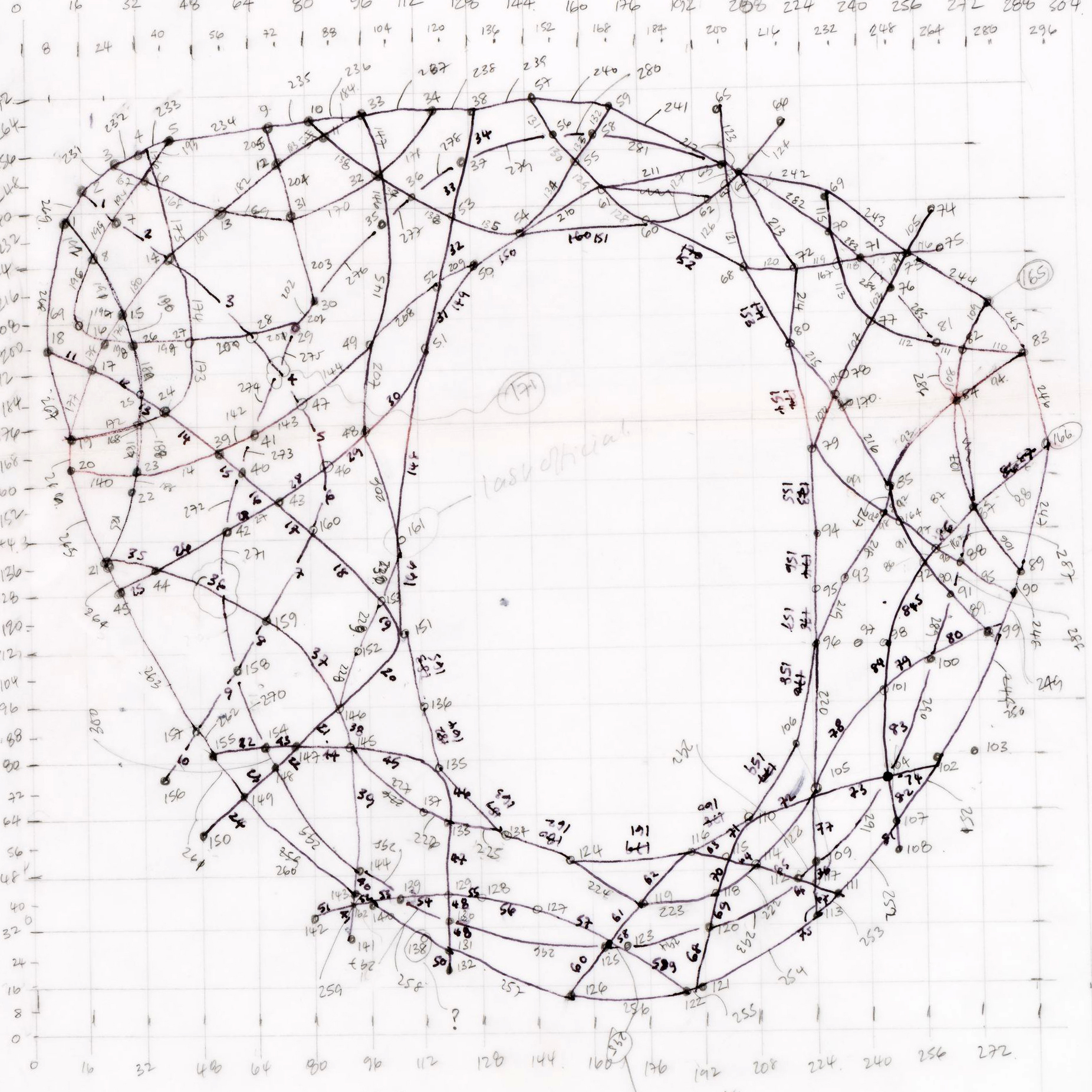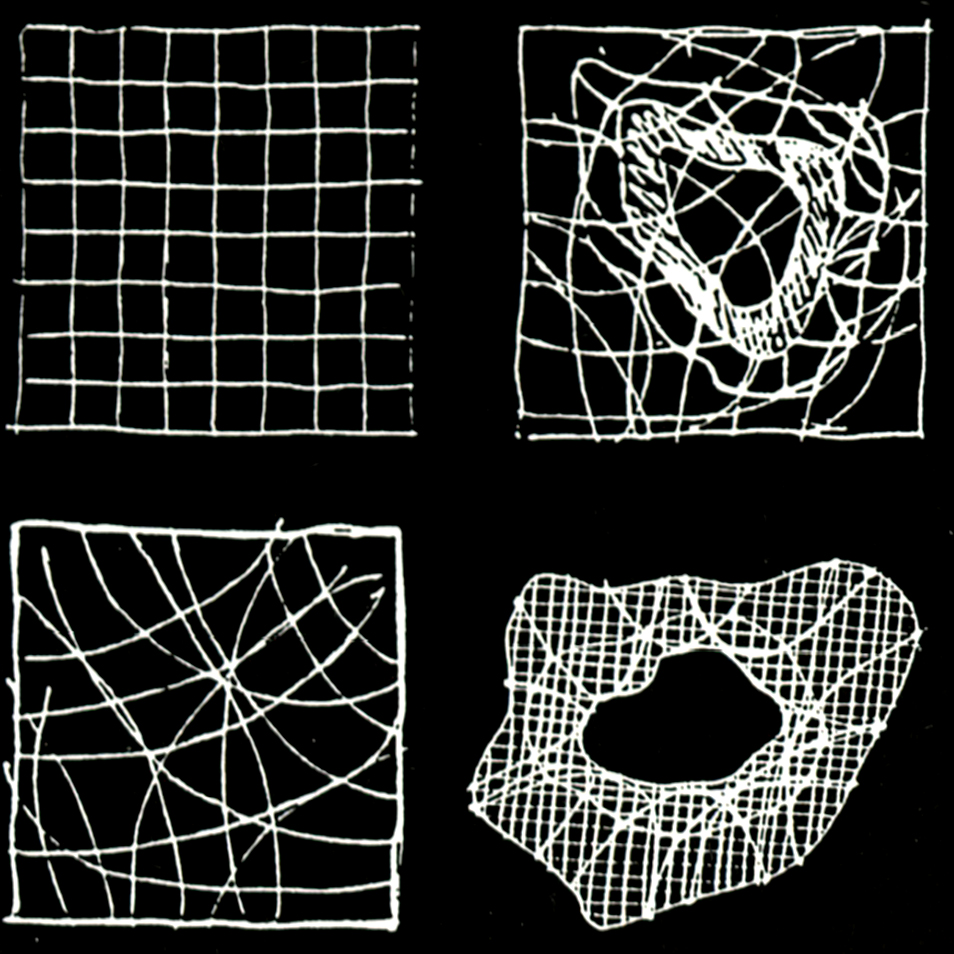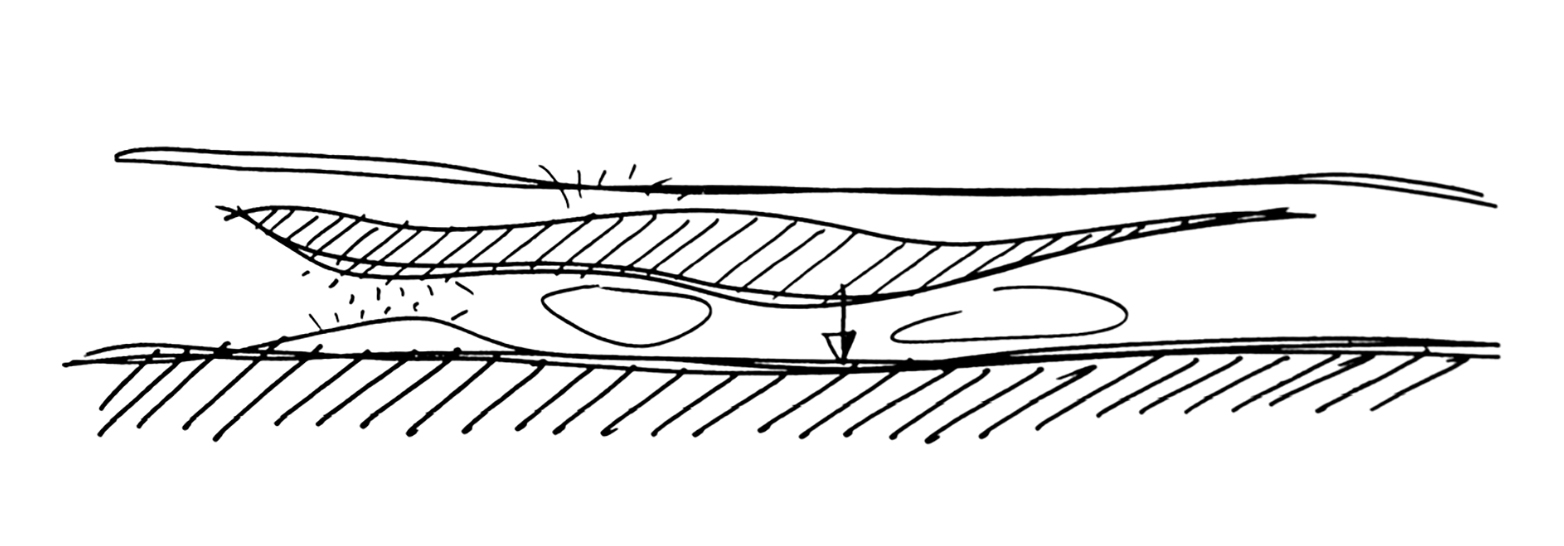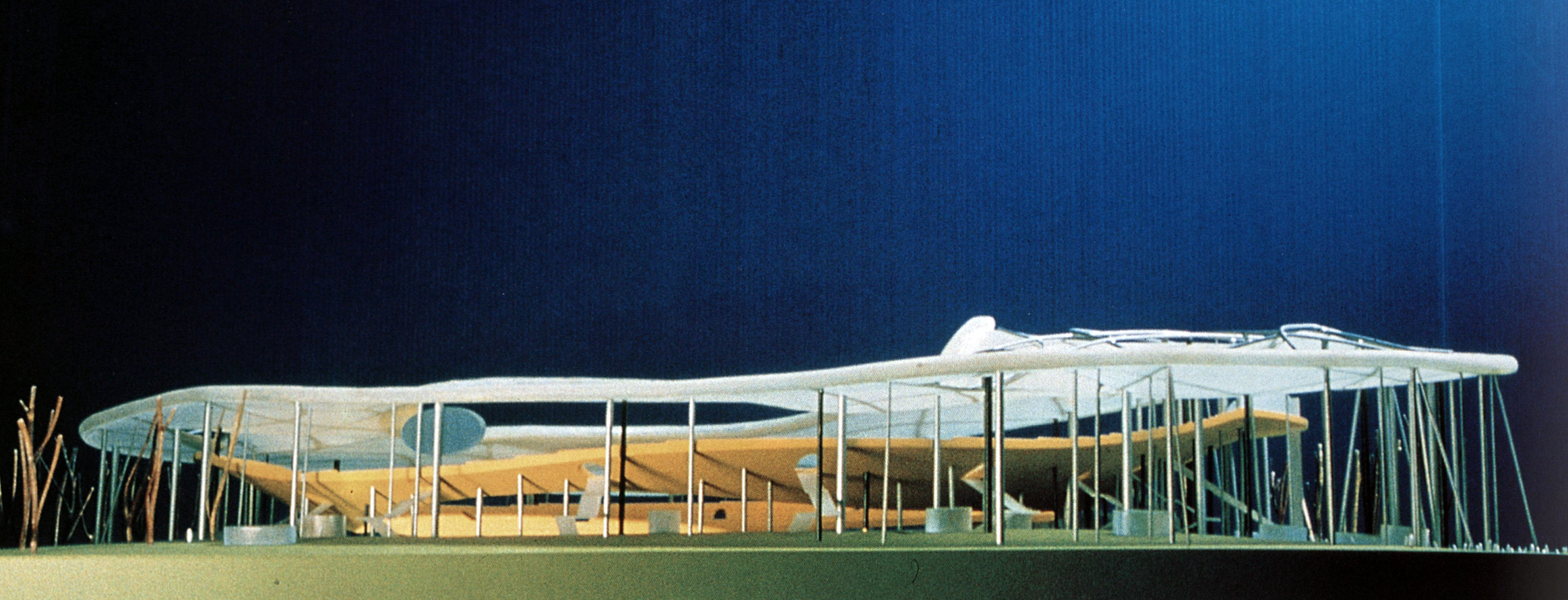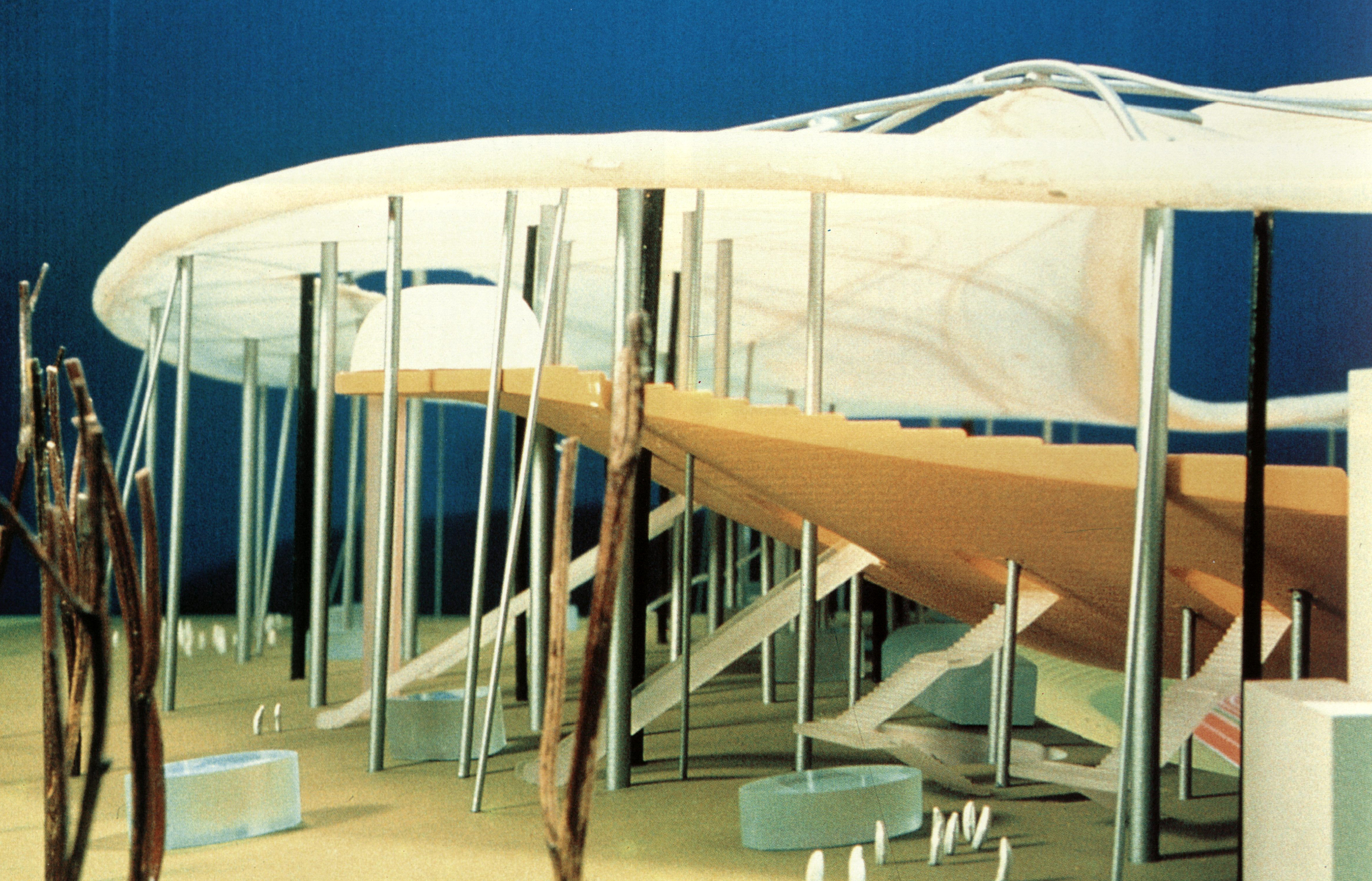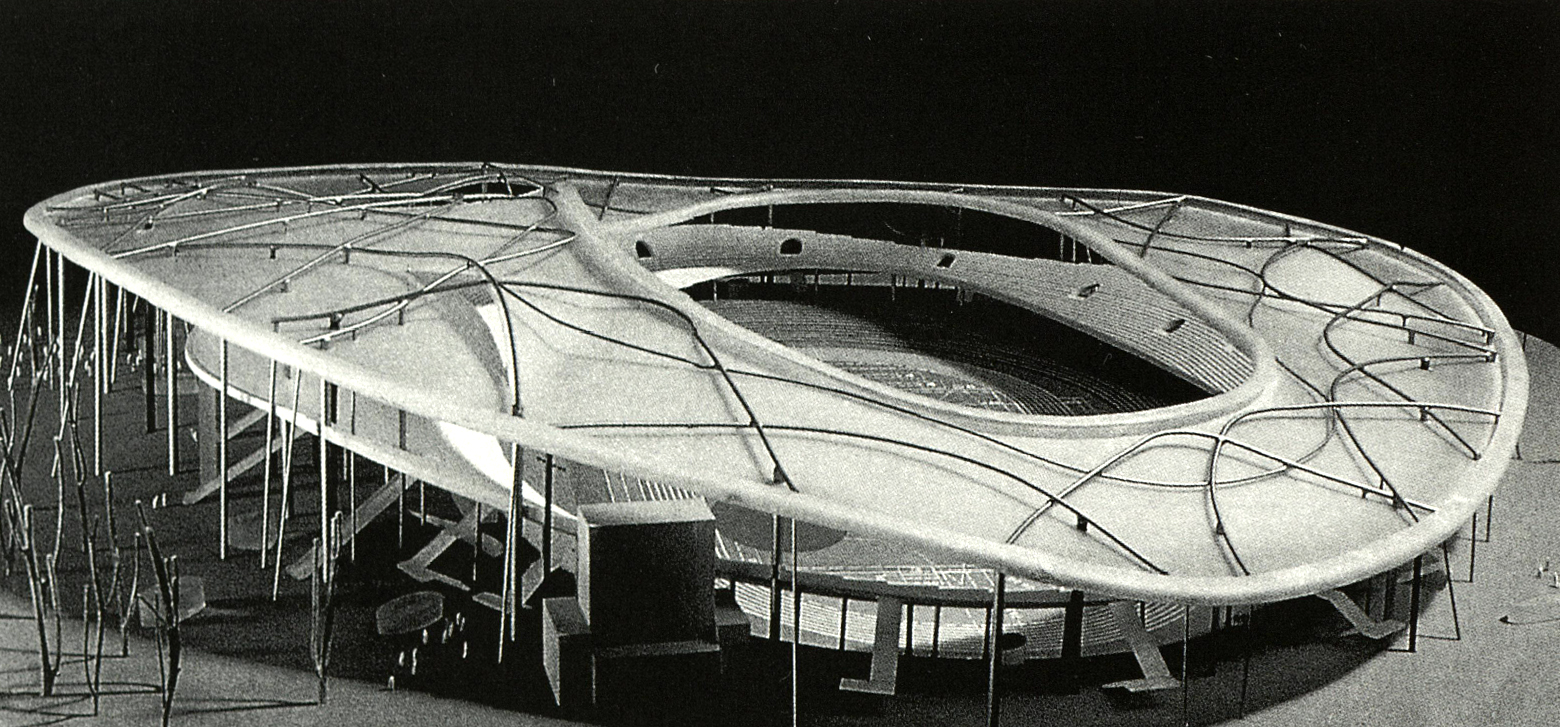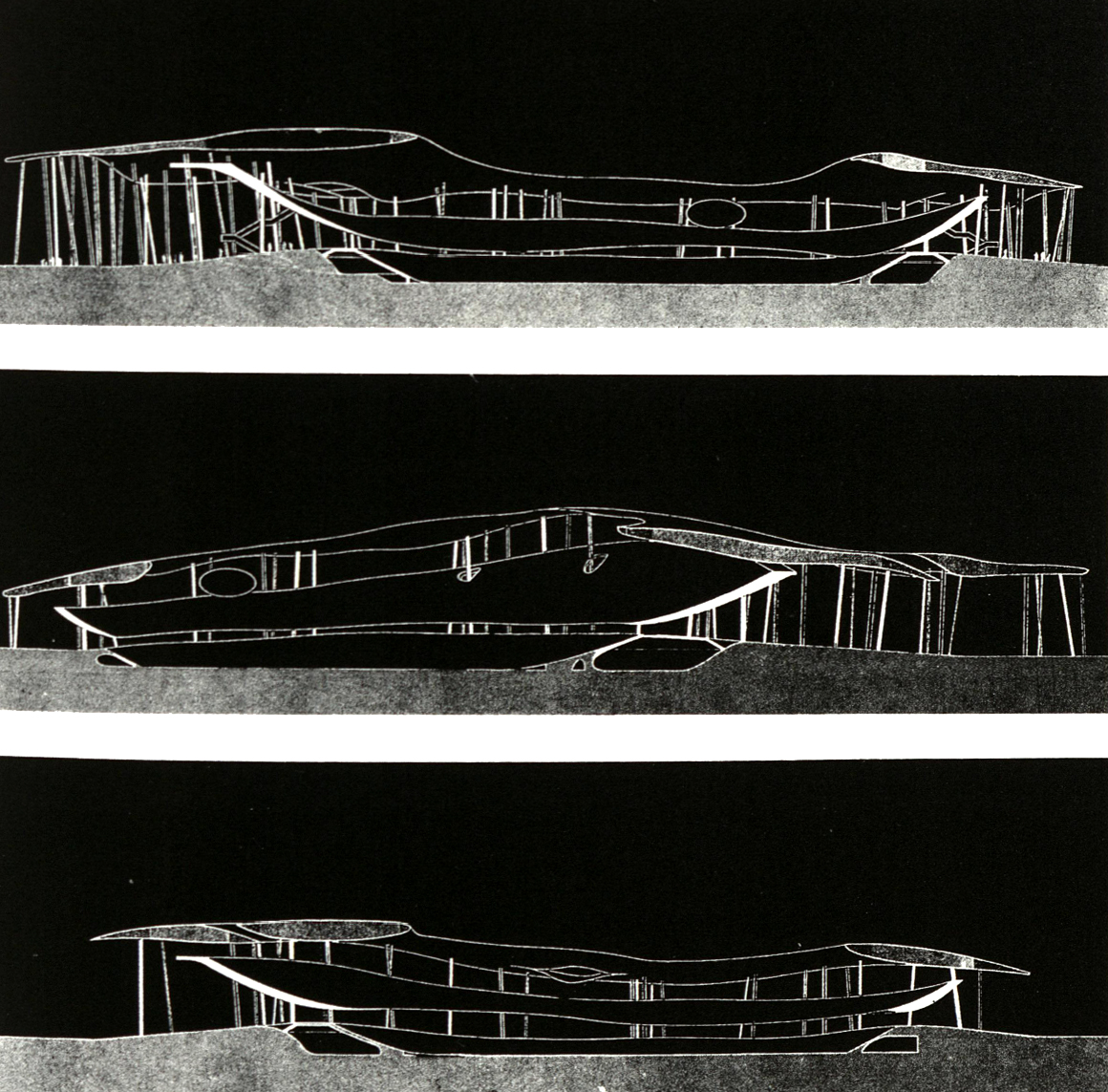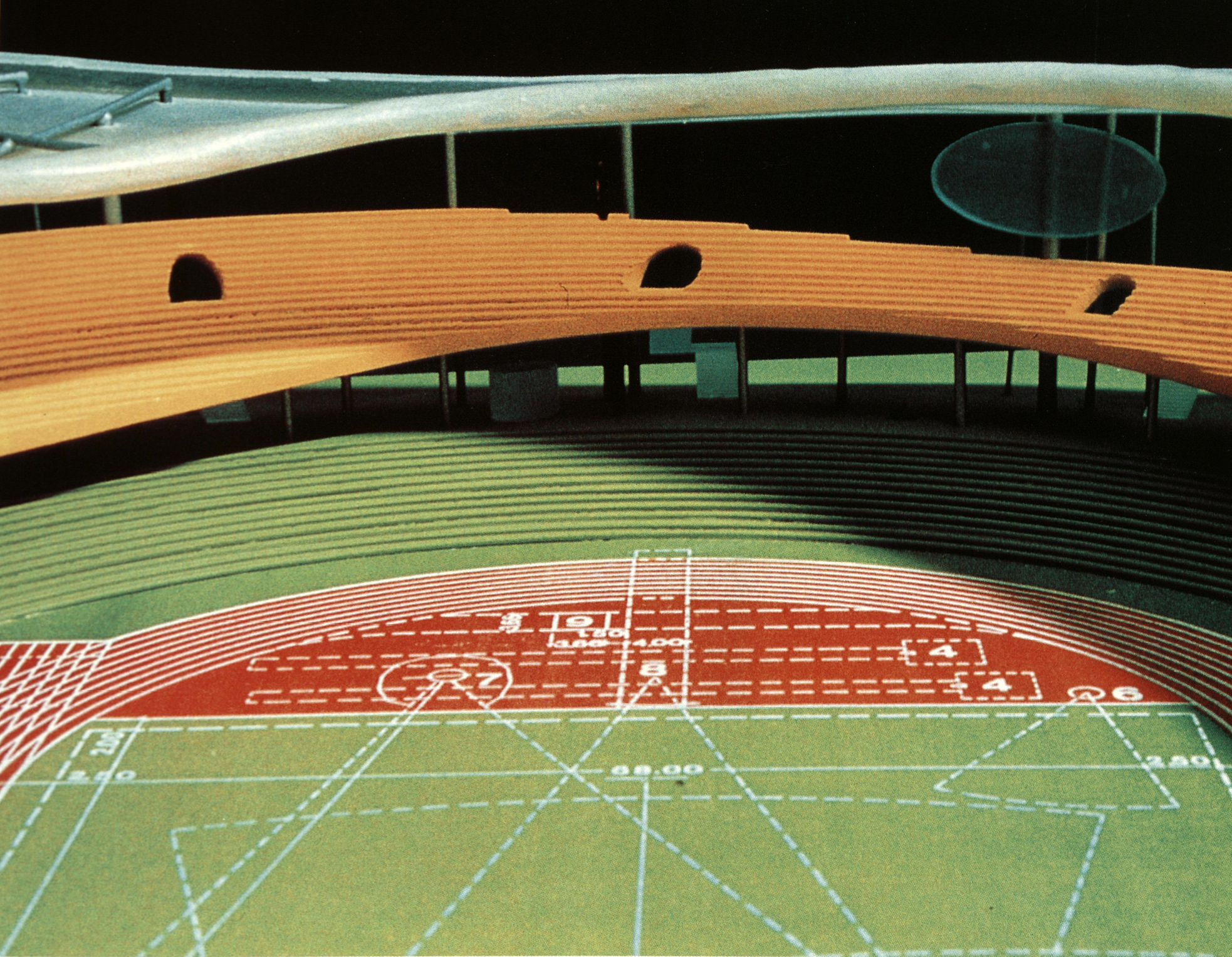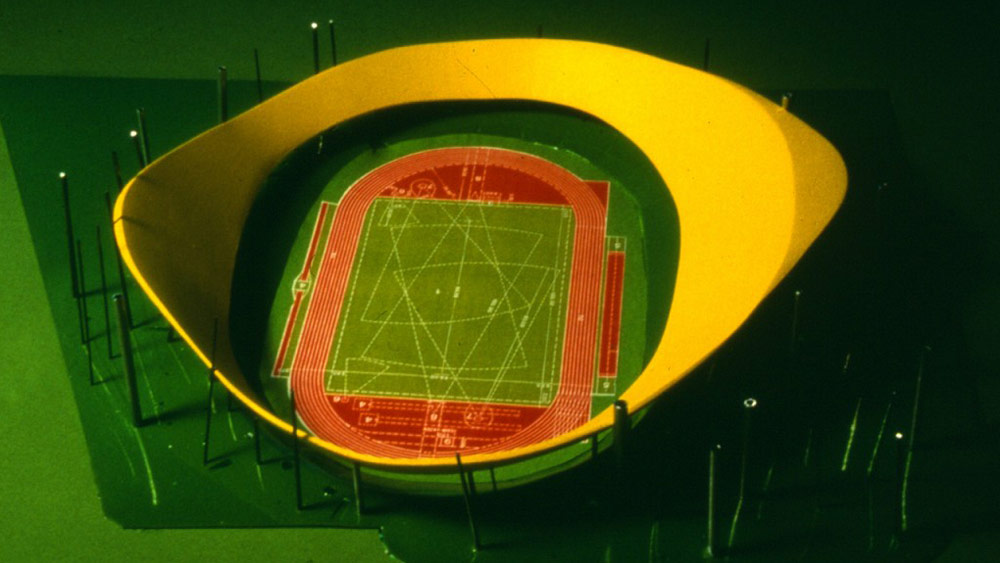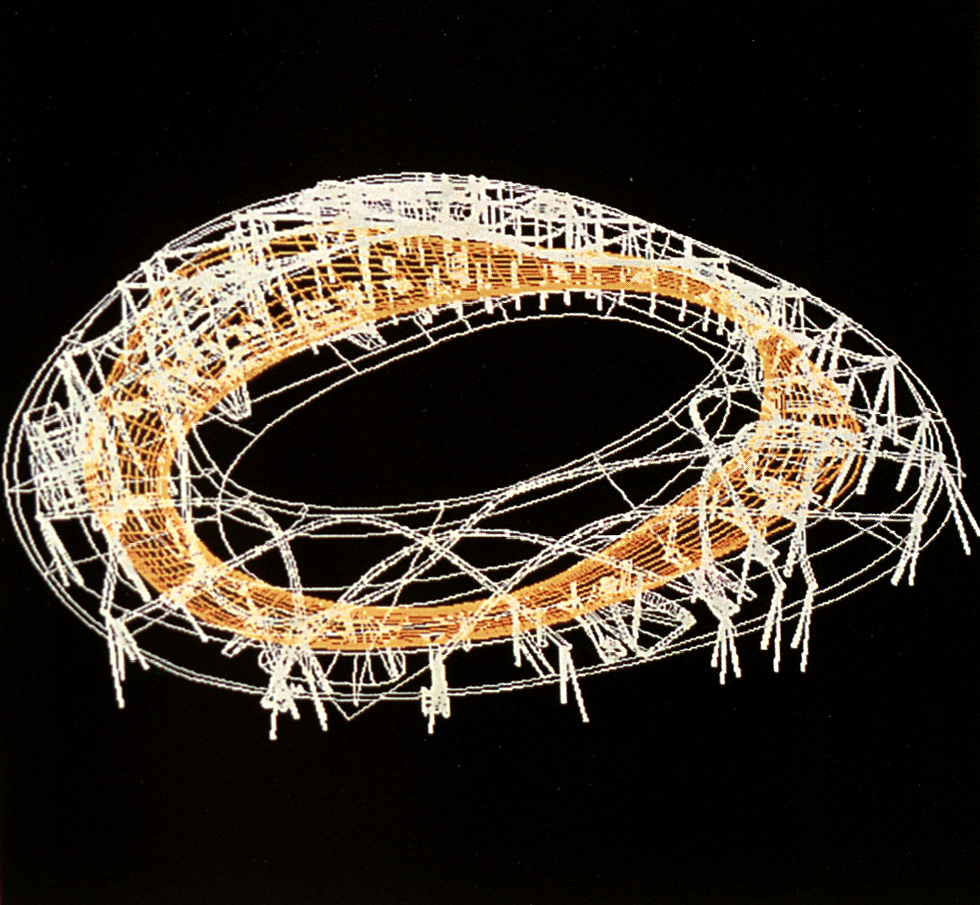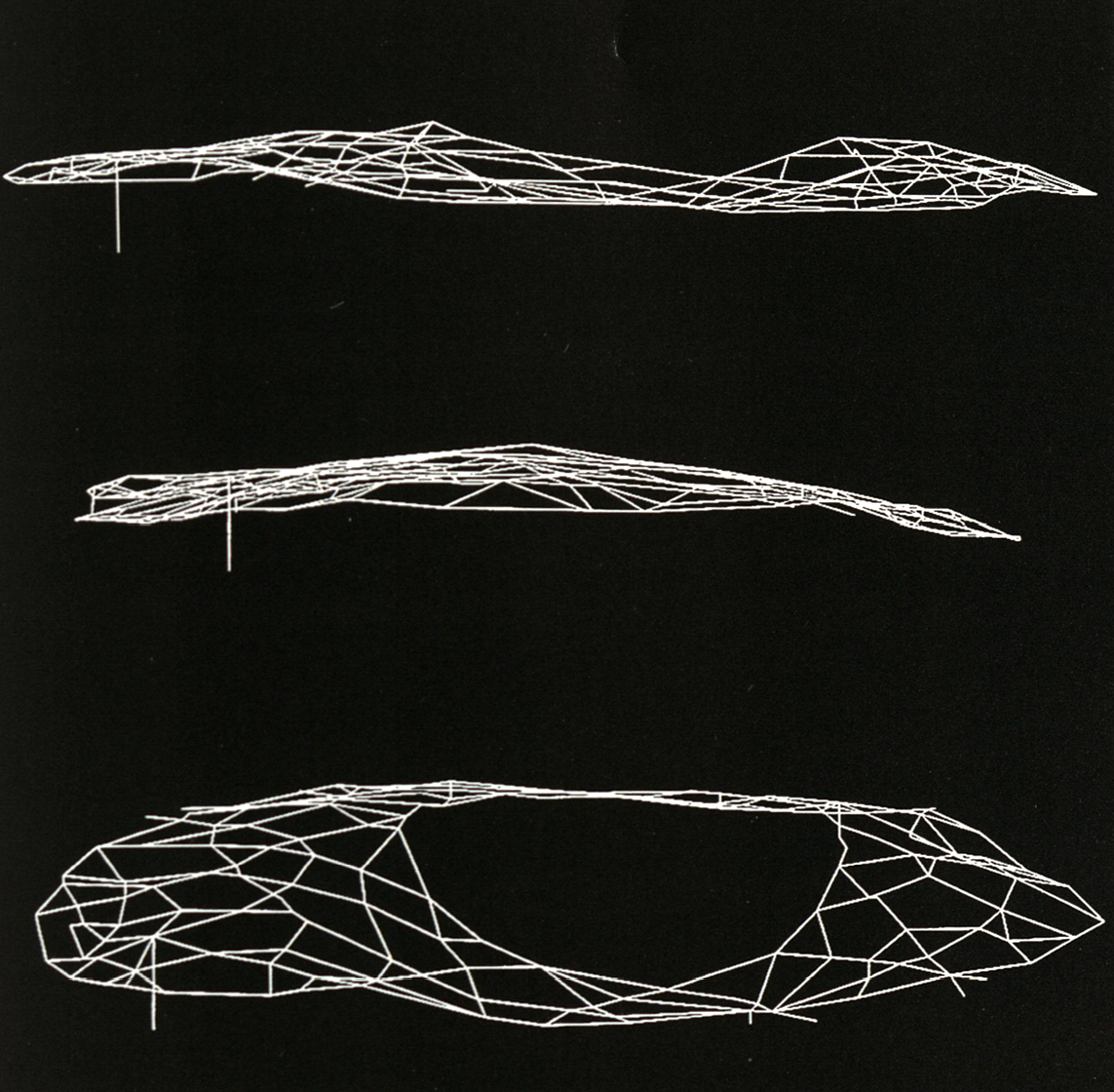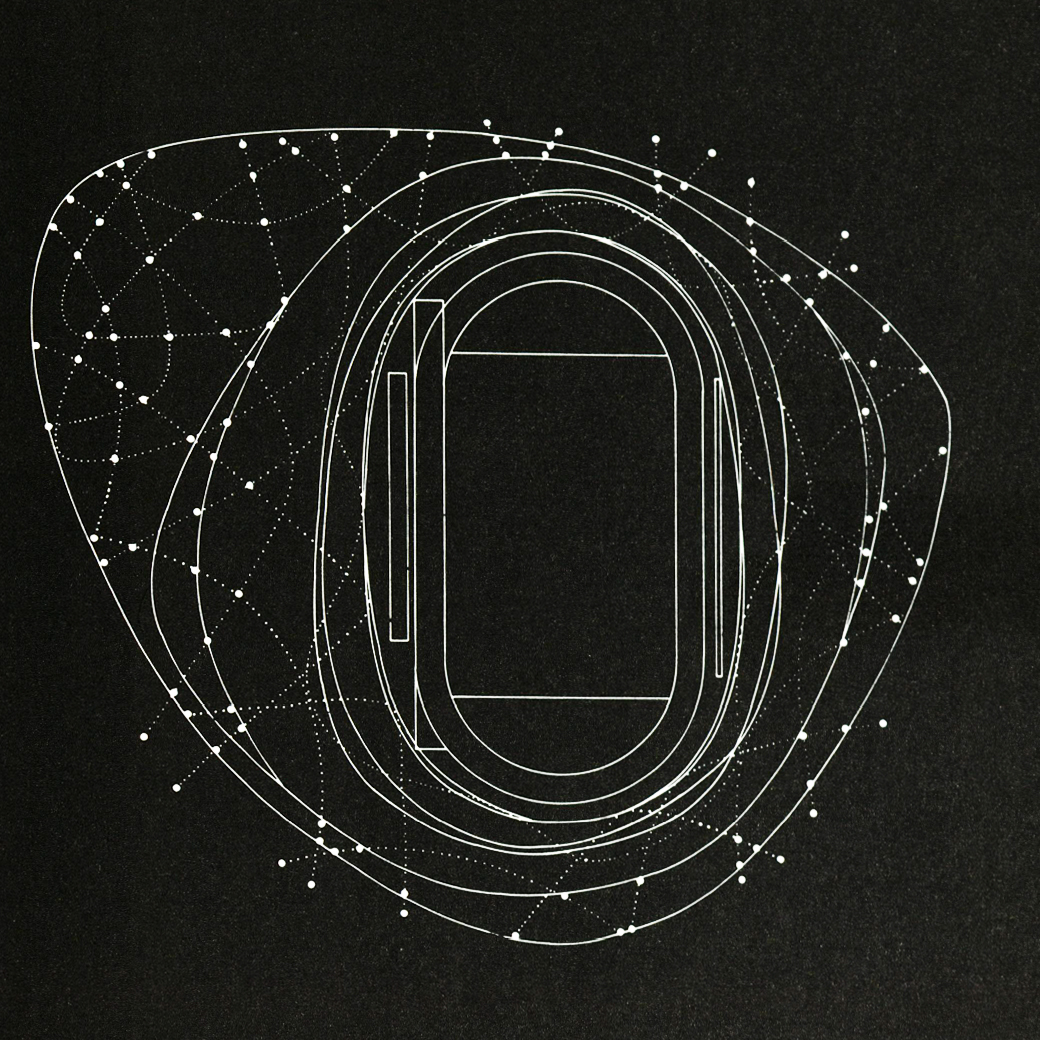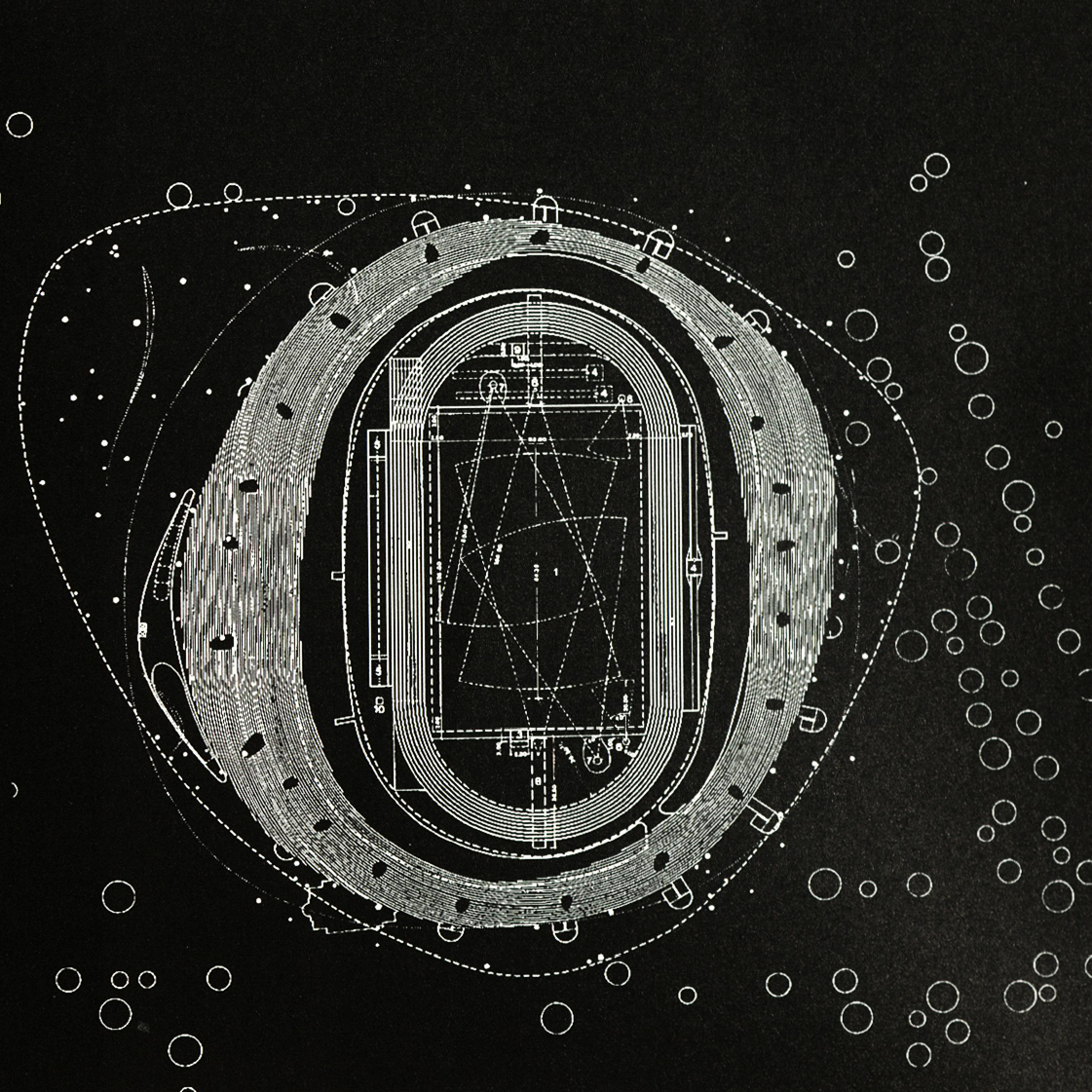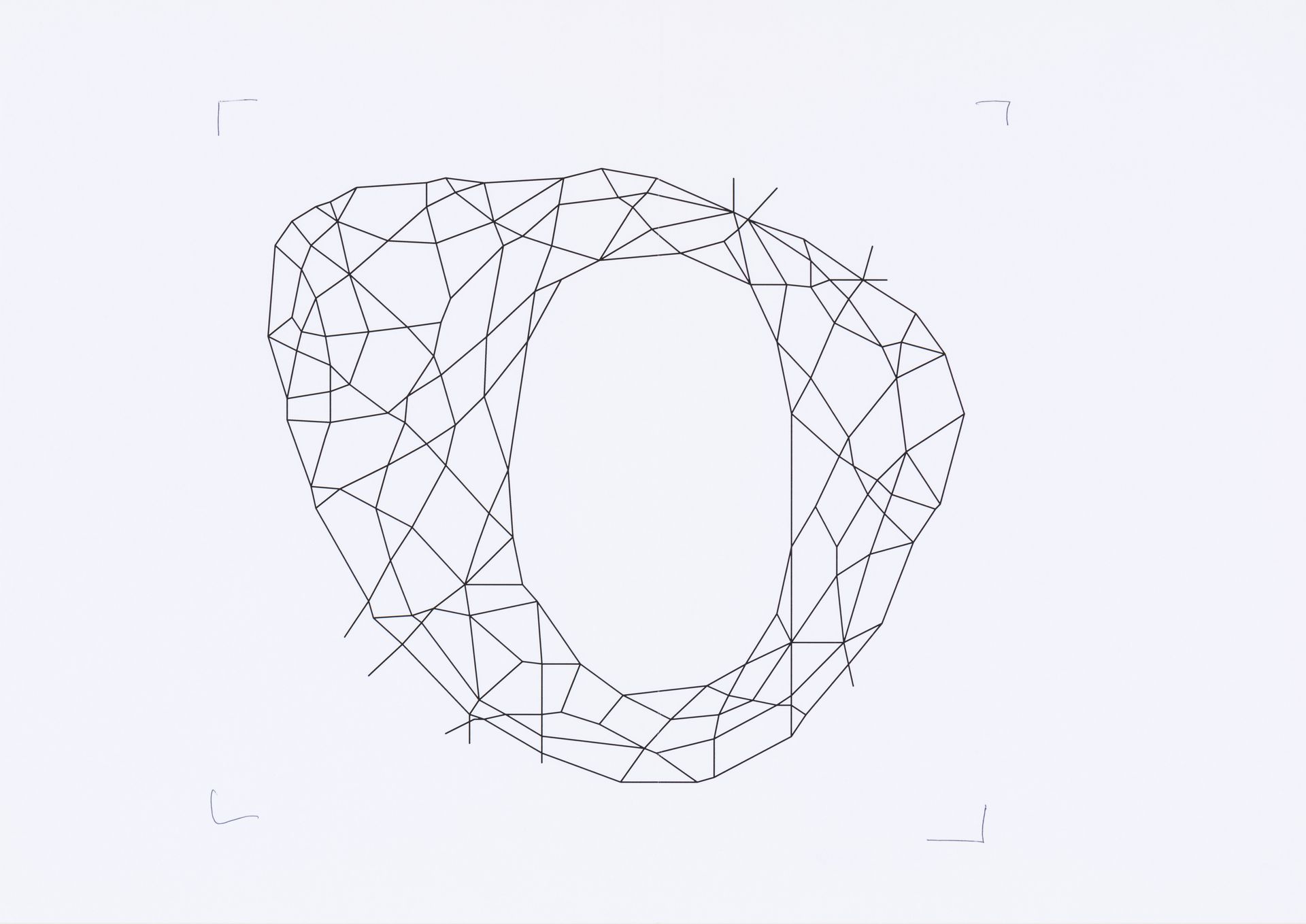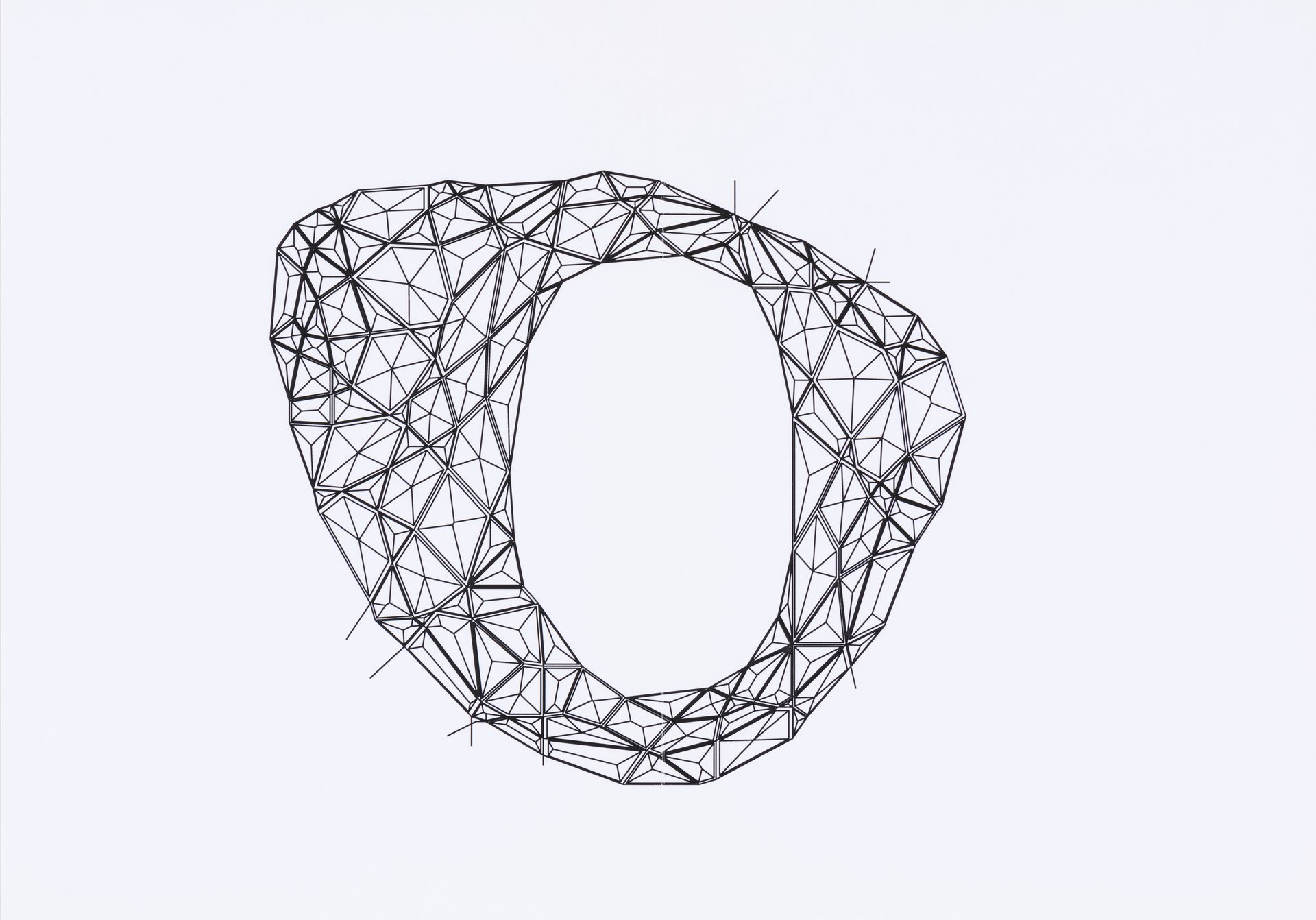Our proposal for the Chemnitz Stadium demonstrates a vision of a light, transparent roof structure over a contoured hill-marked landscape. In between sits the Tribunal as a sculptural object. Free swinging interstitial spaces allow for a clear view of the surroundings. One is at once inside and outside. It forms no building. We are transforming space and landscapes. Architecture and construction lose their rigidity and can be rearranged on a varied formal and functional level. In turn one becomes closer to life itself. The visitor to the stadium does not walk into an impersonal and distressing wall. Instead one crosses a surrounding grove-covered as it is by a transparent, mobile roof-simultaneously part of the sky and clouds.
Various construction methods and materials are differentiated. Their individuality is celebrated by their position next to one another, so that the symbiosis of construction is melted. As such the stadium tower is an example and important signifier of this modeled landscape. The mobile roof and transparent (tensile) textile spans are held in place by an overhead steel construction system. The “Tribunal landscape” is itself generated as a type of earth-mound and sculptural steel and concrete ring. By sinking the playing field in relation to its surroundings the visitor is allowed a simple, selfexplanatory understanding of what is taking place.
The supports of various diameter steel tubing placed in random and angled positions heighten their structural relevance where they support the Tribunal. In addition, a series of sails are placed in tension to create a visual photograph of the forces of wind.
The structural system of the roof is for the most part based on the principal of out cropping supports with diagonal torsion elements that criss-cross to develop a “free” geometry. The variation of these structural elements supports the underside of the bent and deformed roof plane. Additional cables can be placed at points of intersection to further the structural system.
